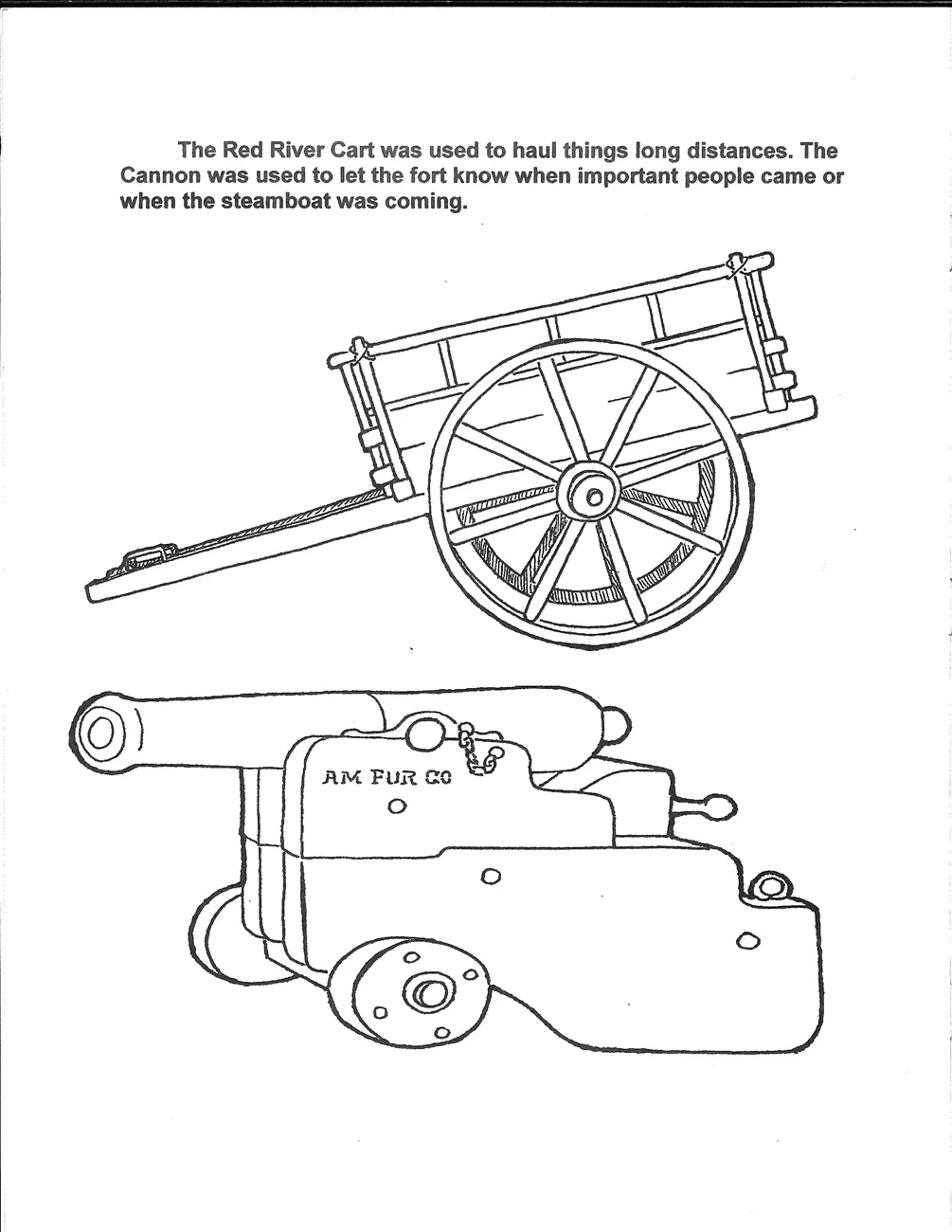Last updated: June 20, 2020
Article
Fort Union Coloring Pages
2. Color. Do the activities. Make it your own.
3. Share your masterpieces to our Facebook page.
Bison and Beaver
Cannon and Cart
Native Woman and Otter Skins
Trade Negotiation

Fort Union Association, Shannon Meyer and Briana Lassey
Physical Description
Beaver and buffalo were all over the plains.Beaver
Beaver live near water and buffalo lived on the open prairie. The beaver is the largest North American Rodent. Beavers are short and fat with a waffle like tail. Their Fur is rich brown with black to reddish guard hairs. They have large buck teeth that are continuously growing.
Bison (Buffalo)
Bison are the largest North American land animals. They have a massive dark head with short black horns curving upward and inward from the base. A large mop of long dark hair covers the top of the head. The body is tall and narrow, with a distinctive large shoulder hump tapering toward the hindquarters. The tail is short and tufted at the end. The legs are relatively short. Adult Bison have heavy light brown hair covering their shoulders and forequarters blending to shorter darker hair from their shoulders back.

Fort Union Association, Shannon Meyer and Briana Lassey
Physical Description
Red River Cart
Red river carts were used to haul things long distances. A red river cart is two-wheeled and is constructed entirely of wood. It is a rectangle with an eight spoked wheel on each side. There are wooden beams extending out the front to attach to horses or oxen.
Cannon
The cannon was used to let the fort know when important people came or when the steamboat was coming. A cannon is a type of artillery, usually large and tubular in shape, that uses gunpowder to propel a projectile over a distance. Cannons vary in size, range, mobility, rate of fire, and fire power.

Fort Union Association, Shannon Meyer and Briana Lassey
Physical Description
Otter pelts were common during the fur trade era. They were scraped and tanned, then traded for things like pots and beads. The river otter is long and cylindrical with four webbed feet and a thick powerful tail. It has small eyes and ears and a flattened head. Its fur is dark brown on top and silvery or paler brown on the throat, chest, and underside. While it is semi-aquatic, its short, muscular legs move surprisingly well on land. The American Indian woman wearing a traditional leather dress is shown scraping an otter hide with a bone or metal scraping tool.
Fort Union Association, Shannon Meyer and Briana Lassey
